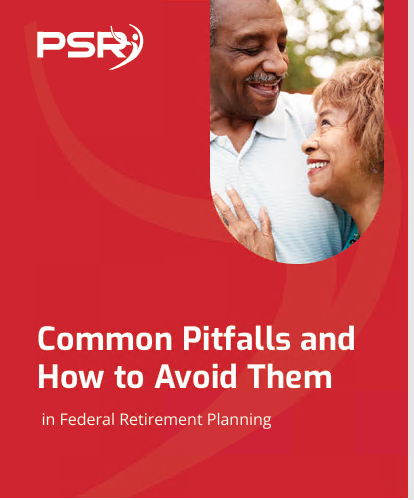Key Takeaways:
-
Understanding how to coordinate Medicare with your Federal Employees Health Benefits (FEHB) plan is key to maximizing your healthcare coverage in retirement.
-
By mixing and matching the right parts of Medicare and FEHB, you can reduce out-of-pocket costs and ensure comprehensive healthcare without paying for redundant coverage.
Medicare and Your Federal Health Benefits: How to Mix and Match to Get the Best Coverage for Retirement
- Also Read: FAA, Law Enforcement, and Special Federal Employee Categories—Here’s What Makes Their Retirement Unique
- Also Read: Blending Private and Public Sector Retirement Plans Is Complicated—Here’s Where Couples Get It Wrong
- Also Read: The Silent Shift in Postal Service Retirement Benefits That Could Change Everything by 2026
Both Medicare and FEHB offer robust coverage, but understanding how these programs work together is critical to avoiding overpaying for coverage or being underinsured in retirement. By carefully evaluating the benefits of each, federal employees can strategically mix and match their Medicare and FEHB plans to optimize healthcare in retirement.
Understanding the Basics: What Medicare Covers
Medicare is divided into several parts, each covering different healthcare services. As you approach retirement, it’s essential to understand what each part covers and how it interacts with your FEHB benefits.
-
Medicare Part A (Hospital Insurance): This covers inpatient hospital care, skilled nursing facility care, hospice care, and some home health care. Most people don’t pay premiums for Part A because they’ve paid Medicare taxes during their working years.
-
Medicare Part B (Medical Insurance): This covers outpatient care, doctor visits, preventive services, and durable medical equipment. Part B comes with a monthly premium, and for many retirees, deciding whether to enroll in Part B alongside their FEHB coverage is a crucial decision.
-
Medicare Part C (Medicare Advantage): These are plans offered by private insurance companies that combine Parts A and B, and often include prescription drug coverage (Part D). However, many federal employees choose not to enroll in Medicare Advantage because FEHB offers broader benefits.
-
Medicare Part D (Prescription Drug Coverage): This covers prescription medications and requires a separate premium. Most federal retirees don’t need Part D because their FEHB plan already includes prescription drug coverage.
How FEHB and Medicare Work Together
When you turn 65 and become eligible for Medicare, your FEHB coverage doesn’t automatically end. In fact, you can keep your FEHB coverage for the rest of your life, even after you enroll in Medicare. The two programs work together, with one acting as your primary insurance and the other as secondary coverage.
-
If You Enroll in Medicare Part A: Most federal employees sign up for Part A because it’s premium-free and provides additional hospital coverage. FEHB will continue to cover what Medicare Part A doesn’t, meaning you’ll have very few out-of-pocket expenses for inpatient hospital care.
-
If You Enroll in Medicare Part B: Many federal retirees debate whether to sign up for Part B because it comes with a premium. However, enrolling in Part B can greatly reduce your out-of-pocket costs for doctor visits, outpatient care, and other services. If you have both FEHB and Part B, Medicare will pay first, and FEHB will pay the remaining costs.
-
What About Medicare Part D?: Most federal retirees don’t need to enroll in Medicare Part D because FEHB already includes prescription drug coverage. Enrolling in Part D could lead to redundant coverage and unnecessary premiums.
Should You Enroll in Medicare Part B?
The most common question federal retirees face is whether or not to enroll in Medicare Part B. Since Part B comes with a monthly premium, some retirees opt to rely solely on their FEHB plan for outpatient services. However, enrolling in Part B offers several benefits:
-
Lower Out-of-Pocket Costs: If you have both FEHB and Medicare Part B, Medicare becomes your primary insurer for outpatient services, with FEHB acting as secondary coverage. This means Medicare covers 80% of your costs, and FEHB picks up the rest, often leaving you with no out-of-pocket expenses.
-
Access to a Broader Range of Providers: Medicare has a vast network of doctors and specialists. Enrolling in Part B ensures you have access to a wider range of providers, especially if your FEHB plan has a more restricted network.
-
Reduced Co-Pays and Deductibles: When Medicare is primary, you’ll typically see reduced or eliminated co-pays and deductibles for covered services. This can save you money in the long run, even after accounting for the Part B premium.
That said, some retirees may not find Part B necessary if their FEHB plan already provides comprehensive outpatient coverage at a low cost. The decision ultimately depends on your specific health needs and financial situation.
Weighing Your Medicare and FEHB Options: Key Considerations
Choosing how to combine Medicare and FEHB requires evaluating several key factors:
-
Health Status: If you expect to have high healthcare expenses in retirement, enrolling in both Medicare Part A and Part B might save you significant money by reducing out-of-pocket costs. However, if you’re in good health and don’t visit the doctor often, sticking with just FEHB and Medicare Part A could be a more cost-effective option.
-
FEHB Plan Type: Some FEHB plans are designed to work seamlessly with Medicare, waiving deductibles, co-pays, and co-insurance if you have both FEHB and Medicare Part B. If you’re considering whether to enroll in Part B, look at how your specific FEHB plan coordinates with Medicare.
-
Costs: Medicare Part B premiums can add up over time, especially if you’re on a fixed income. Balancing these premiums with the potential out-of-pocket savings is essential when deciding whether to enroll in Part B. On the flip side, if you choose not to enroll in Part B when first eligible, you could face a lifetime late-enrollment penalty if you decide to join later.
-
Prescription Coverage: If you’re satisfied with your FEHB plan’s prescription drug coverage, there’s no need to enroll in Medicare Part D. FEHB plans often offer robust drug coverage without the need for additional premiums.
-
Long-Term Care Needs: Medicare and FEHB do not cover long-term care services, such as nursing home care or assisted living. If you anticipate needing long-term care, it may be worth considering a separate long-term care insurance plan or building these costs into your retirement budget.
Maximizing Your Health Coverage: Strategic Combinations
To get the best coverage in retirement, consider the following strategies for mixing and matching Medicare with FEHB:
-
Medicare Part A and FEHB: This is a popular combination for many federal retirees. Part A covers inpatient care, while FEHB covers outpatient services, prescriptions, and more. You get comprehensive coverage without paying extra premiums.
-
Medicare Part A, Part B, and FEHB: For retirees with more extensive healthcare needs, adding Part B provides comprehensive coverage for outpatient services, while FEHB covers the gaps. This combination can minimize out-of-pocket expenses, especially if your FEHB plan waives deductibles when combined with Part B.
-
Medicare Advantage vs. FEHB: Some retirees consider Medicare Advantage plans as an alternative to FEHB. However, FEHB generally offers broader coverage and flexibility, so most federal employees choose to keep FEHB and avoid Medicare Advantage.
Navigating Medicare Enrollment: Don’t Miss the Deadlines
Once you turn 65, you become eligible for Medicare, but failing to enroll during the appropriate windows can lead to penalties and gaps in coverage. Here’s what you need to know about Medicare enrollment:
-
Initial Enrollment Period (IEP): This seven-month window starts three months before your 65th birthday, includes your birthday month, and ends three months after your birthday month. During this time, you can sign up for Medicare Parts A and B without penalties.
-
Special Enrollment Period (SEP): If you’re still working past age 65 and covered by FEHB, you can delay Medicare enrollment without penalties. Once you retire, you’ll have an eight-month SEP to enroll in Medicare without facing a late-enrollment penalty.
-
Late Enrollment Penalties: If you miss your enrollment period and don’t qualify for an SEP, you could face lifetime penalties. For Medicare Part B, the penalty is a 10% increase in your premium for every 12 months you were eligible but didn’t enroll.
By enrolling on time and making informed decisions, you can avoid unnecessary penalties and ensure you have the best coverage.
Balancing Costs and Coverage for a Healthier Retirement
Ultimately, getting the most out of your healthcare in retirement depends on understanding the nuances of both Medicare and FEHB. For many federal retirees, the best strategy is enrolling in Medicare Part A and keeping their FEHB plan. Adding Medicare Part B can provide additional coverage but comes at a cost, and the decision to enroll should be based on individual healthcare needs.
By reviewing your options, weighing your expected healthcare needs, and staying mindful of costs, you can find the right mix of Medicare and FEHB to ensure comprehensive and affordable coverage in retirement.
Planning the Best Mix of Medicare and FEHB
As a federal retiree, having access to both Medicare and FEHB puts you in a strong position for managing healthcare costs. Understanding how to blend these two programs effectively is key to maximizing your coverage and minimizing out-of-pocket expenses in retirement. Evaluate your options carefully, and you’ll be well on your way to a more secure and cost-efficient healthcare plan.













